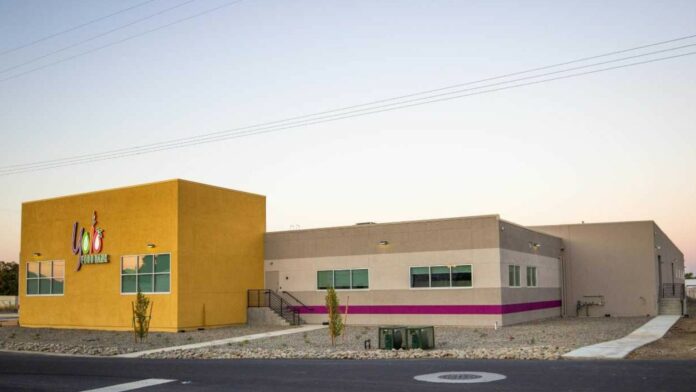As economic downturn continues, organizations focus on safely feeding people
As lockdowns continue to flatten the curve of COVID-19, the economic strain on workers worsens. In the wake of both a health and social needs crisis, the Yolo County Food Bank and Davis Short Term Emergency Aid Committee (STEAC) have both confronted the growing need for food while adhering to social distancing standards.
Executive Director of Yolo Food Bank Michael Bisch explained in a press release that there has been an increase in food assistance among people seeking aid for the first time.
“In the five weeks since the shelter-in-place order, we’ve experienced a 30% increase in requests for food assistance, primarily from community members seeking our assistance for the very first time,” Bisch said in the press release.
Yolo Food Bank Director of Philanthropic Engagement Joy Cohan listed the ways the food bank has changed in a short period of time, including mandating facemasks and implementing drive-through locations.
“We essentially had to radically adapt and expand our entire service delivery model in a few days’ time,” Cohan said. “We’ve had to adapt our traditional food distribution for social distancing purposes. That has included how the food is dispersed, how people line up for the food — requirements around gloves and facemasks. It’s also been transitioning some locations to drive-up distribution models.”
On top of changing services, STEAC Executive Director Liane Moody explained that recruiting new volunteers was another challenge her organization faced.
“We run the local food closet in Davis, and most of our volunteers were over 65,” Moody said. “When the crisis hit and the shelter-in-place orders were put down, we had to both recruit new volunteers and change the way that we provided services so that we could keep volunteers and clients safe.”
The food bank faced a similar need for more volunteers and succeeded in attracting over 700 volunteers, who helped to launch new programs, including a large-scale effort to home-deliver food.
“We began our emergency home-delivery program,” Cohan said. “It has now expanded to about 2,300 households throughout the county each week. It is serving about 5,000 individuals in their households.”
STEAC has adapted to the current climate by changing to outdoor pick-ups and increasing the number of weekend lunches it offers to Davis Joint Unified School District students.
“We’ve become much more of a pick-up model now,” Moody said. “We also deliver food to students for the weekends. We’ve even upped the amount, so we take bags every Friday for people who are picking up their lunches at the schools to help during the weekends.”
Even after the immediate health crisis has passed, the food bank’s new programs and increased services will most likely continue to expand for some time.
“Parts of these new service delivery models will be maintained and our service will be permanently changed as a result of this,” Cohan said. “We are foreseeing that when the literal health crisis is over, due to the economic downturn, we’re going to be serving more people for some time, if not permanently. We’re going to have people who lost jobs, or their businesses have now failed, who are going to be availing themselves to food bank services.”
Moody echoed similar sentiments, saying STEAC expects increased demand in the future. She also said safety requirements like gloves and masks might also outlast the immediate crisis.
“As the financial crisis goes on, we expect that more and more people will need support,” Moody said. “We also expect there to be a need for these higher precautions for a while, so we do expect that we’re going to need to keep with the changes to our model to keep everyone safe for as long as necessary.”
Written by: Eden Winniford –– city@theaggie.org




